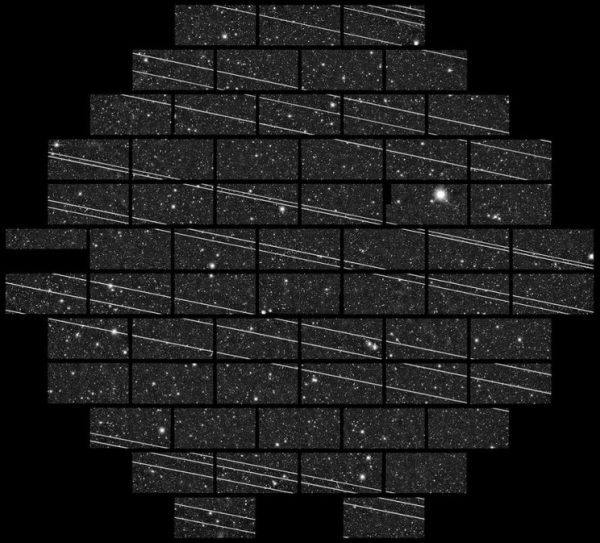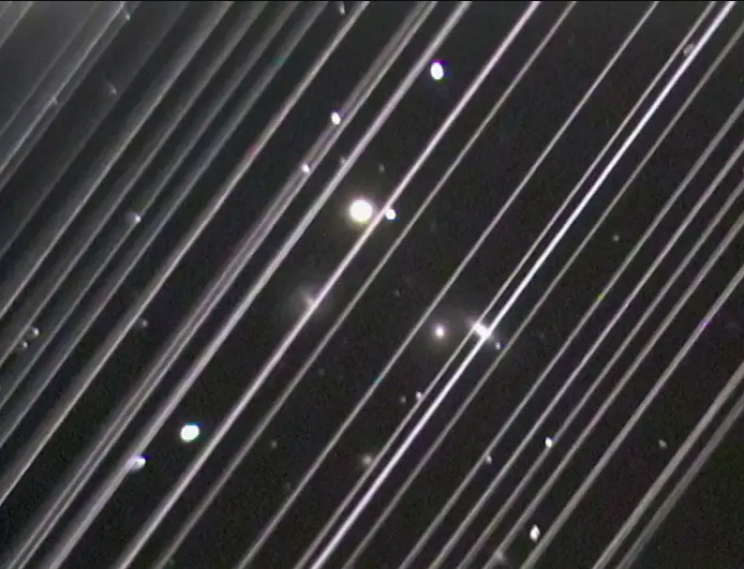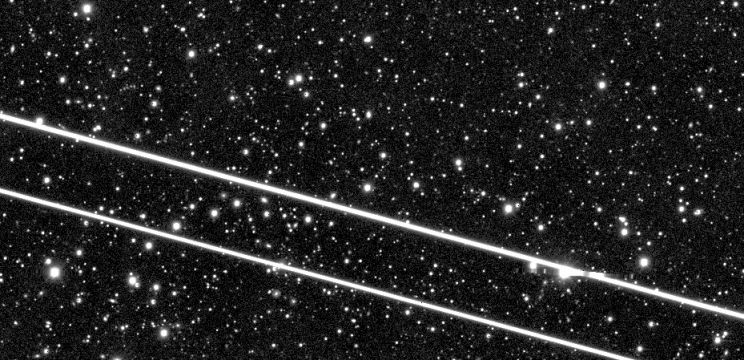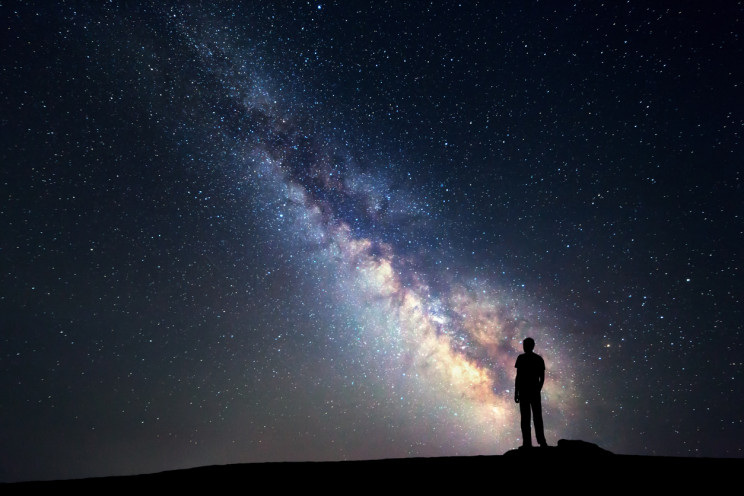Elon Musk Claims Starlink Satellites Won’t Impact Astronomy, but Research Says Otherwise – Interesting Engineering
Imagine that the date is decades away from now, and you’re lying on the face of Earth, contemplating your place in it as the sky surrounds you. It’s so vast that your own insignificance becomes palpable, and you’re watching the sky as numerous stars shine above you. Is that an extraterrestrial object that is drifting above you? Or is it just a satellite that just happened to wander way too close to the Earth?
November 18, 2019 marks a milestone for the edge of tomorrow. An astronomer, Cliff Johnson, was , surveying the Magellanic Clouds when a number of unfamiliar objects clouded his view. He and his team were seeing streaks coming across their webcam footage, that they couldn’t identify.
What they were seeing was the 19 satellites that were passing the telescopes’ view. Just a week earlier, Elon Musk’s SpaceX 60 satellites into the low Earth orbit, which were actually the uninvited guests that were clouding their footage.
SEE ALSO: SPACEX’S INTERNET SERVICE, STARLINK, COULD MAKE THE COMPANY WORTH $120 BILLION
This was our sky that night. And for many years, our skies will continue to be home to many more of those gleaming streaks. Maybe you will be wishing upon a satellite, who knows?

Starlink: It is Evolving
As of now, SpaceX 360 small satellites, and the Starlink project is only three percent complete. The company plans to construct a “megaconstellation” of 12,000 satellites, and it is not the only company that has its eyes set on the horizon. OneWeb and Amazon to launch numerous satellites to the orbit too.
These satellites will provide internet access to the remote areas of Earth to connect the world even more than before. They could be of important use during natural disasters since even if the communication infrastructure in the ground was damaged, people could still access space-based internet.
The new types of satellites are smaller than their kin and orbit closely to the Earth to provide a speedy connection. After the launch, they climb into higher orbits, and become less visible; however, it is almost impossible for them to not affect astronomers’ studies.
12,000 Starlink Satellites in the Sky Simulated
There’ve been the issue of Starlink disturbing the work of astronomers and cutting our view of the universe and depriving us of a clean image of the night sky. Moreover, it could create more space debris for us to clean up.

SpaceX founder Elon Musk the issue on March 10 by saying, “I’m confident that we will not cause impact whatsoever in astronomical discoveries, zero. We’ll take corrective action if it’s above zero.”
Now, Jonathan McDowell, an astrophysicist at the Harvard-Smithsonian Center for Astrophysics, has of the future 12,000 Starlink satellites in the sky, and how they’ll affect the world. His research shows that, maybe, Musk’s confidence on the issue is rather empty.
He built the simulation considering the satellites’ size, altitude, number, and observed brightness reports. The next step was to calculate how many satellites would pass overhead at different points during the night in each season and location around the world.
Needless to say, the results showed that a sky with 12,000 low-flying Starlink satellites would look different from what’ve been used to.
His work is mainly mathematical and relies on graphics and figures. So, before we continue, here is a simulation of the sky with 12,000, as seen with the naked eye.
And here is another one as imagined during a summer night, at 32° latitude.
According to McDowell’s study, people in the city wouldn’t notice any differences. However, people in rural areas would see the satellites swarming overhead, sunlight shining on their metallic surfaces. Maybe counting satellites would be the next romantic thing.
As you’d guess, they would be fully visible to the lens of a telescope. These newcomers wouldn’t pose an existential threat to the astronomers, but dealing with their existence would be a significant part of how astronomy is done in the future.
How would it affect the astronomers?
SpaceX is launching the new satellites monthly, and McDowell suggests that researchers should start preparing for the new skies immediately.
The expected damage the satellites inflict in astronomical research will probably vary by project and observatory location. Astronomers will need new cameras, additional software, and more funding to deal with the effects of Starlink.
They might use software to edit out the unwanted streaks of the satellites, or might need to use specialized hardware for that. However, it should be noted that their existence erases some data from the telescope’s vision permanently, as it can be seen down below. In Johnsson’s case, 15 to 20 percent of the data was erased completely.

Ultimately, the observatories will have to go through a period where they’ll have to work out which strategies they should follow for their exact location and specification. McDowell says, “It’s going to change the environment so much that there will be unexpected consequences we haven’t thought of.”
What is SpaceX doing about it?
The company is working with astronomical organizations to minimize the effects of Starlink in the night sky.
Moreover, SpaceX is experimenting with painting the Earth-facing side of the satellites black. This is expected to dim their reflectivity. The first “darksat” prototype in January, and the company states that is it 2.5 times dimmer than its shiny counterparts.
However, it should be noted that this might not work at all. Dark satellites might absorb excess heat, and this could impact their functioning greatly. It is safe to say that SpaceX is following more of a “trial and error” method on this subject.
According to McDowell, if it works, this reduction will probably make satellites invisible to human vision. He says, “That’s probably enough to save the naked-eye sky, but it’s not enough to save professional astronomy.”
Over time, astronomers can adapt to such differences and learn to live with them; however, we might need international treaties limiting the number of satellites that are allowed to help astronomy in the long term. Moreover, as of now, there are no regulations, rules, or guidelines of any sort dealing with the satellite brightness.
A Different Sky For All of Us
All in all, as the beloved Carl Sagan once said, “the sky calls to us. If we do not destroy ourselves, we will one day venture to the stars.”

The night sky has been our companion and storybook ever since those times when we were just cavemen looking up at the sky with wonder. This is not to say that it should stay as it is since that would be cutting in the way of science and reason.
Would you be pleased to see the marks of how far we’ve actually come in the sky every night? Or do you think that such drawbacks are too much to be considered signs of progress? Whatever your answer is, it is a fact that companies changing the way how humans and organisms experience the night sky is something that needs to be talked about more often.






